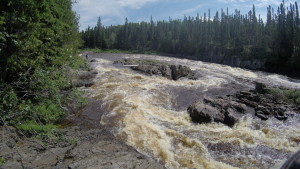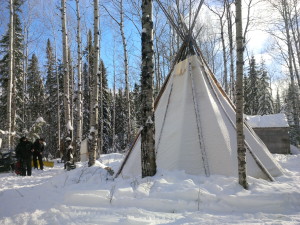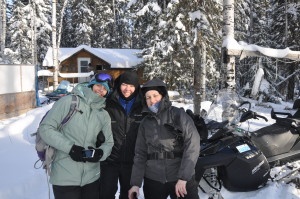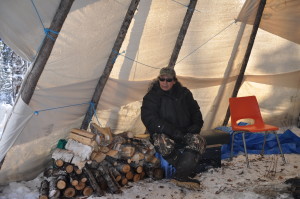**Originally posted in The Huffington Post**
“I take my kids there. We all dip our cups in the river and drink straight from it,” Josh said recently when I was in Moose Factory, a remote community on the James Bay coast. Josh is a dad from Moose Cree First Nation. He’s talking about a river that still flows without interruption and is the last source of clean drinking water in northeastern Ontario. In English it’s called the North French. In Cree one of its names is Meh ko pwa meh ŝtik Sîpiy meaning “red willow river”.

Moose Cree has spent years using their laws to keep the river safe from resource development. But Ontario has yet to reciprocate and still keeps the watershed open for industrial activities such as mining under provincial laws. This is a recipe for conflict.
The North French flows into the Moose River from its headwaters about 50 km north of Cochrane. Within the watershed, woodland caribou and birds ranging from warblers to nighthawks, several of which are threatened species, continue to find refuge. A variety of fish — an important traditional food source — also thrive in the North French River, including a genetically distinct population of sturgeon, even from those in the Moose River. This boreal watershed also holds significant carbon stores that must be maintained if Ontario is to keep its Paris climate commitments.
Moose Cree’s efforts to safeguard this river date back to 2002 when the community informed then MNR Minister Jerry Ouellette of the need for permanent protection. The minister rejected that request. The community persevered. Over the next 14 years they would face down mining and forestry companies. And they would conduct studies and canoe trips to enhance Moose Cree’s traditional knowledge of the river.

Moose Cree is patient and thinks long term. Many still hunt on the land, but they’ve also been diversifying their incomes by developing businesses ranging from tourism operations to a partnership in a major hydroelectric project on the Lower Mattagami River. In a February 2015 letter to Premier Wynne, Chief Norm Hardisty said that, “The Moose Cree… are not generally opposed to resource development in our Traditional Territory.” However, his First Nation is determined that the health of the rivers and land they have long relied on will be protected. In that same letter, Chief Hardisty made it crystal clear that the First Nation intends to protect the 6,660 km2 North French Watershed — representing about 10 per cent of their traditional territory and containing the last river there that has not yet been negatively impacted by resource development.

The case for protecting the North French River is strong and compelling. It’ll help Ontario meet its ambitious objectives under the Far North Act and Endangered Species Act. It’ll help with caribou conservation as mandated by the federal recovery strategy for threatened boreal caribou. It’ll help Ontario further its bold climate plans. And it’ll help Ontario toward reconciliation with Indigenous people. Protecting the North French would be a gift to the planet. And Moose Cree has already done most of the heavy lifting. Forestry companies are largely respecting the call for no logging within the watershed. Moose Cree has launched its own conservation plan, with members monitoring the area to ensure that mining companies avoid staking claims and drilling there, and negotiating with others to reduce harm they may cause in managing a hydro corridor that transects the North French headwaters.

With the one year anniversary of the letter to Premier Wynne fast approaching and online staking coming in 2017, it’s time for Ontario to get on board. The longer Ontario delays putting in place a land withdrawal the greater the risk of someone physically staking more mining claims here thereby jeopardizing the protection initiative. Next year the risks could be even greater. Anyone anywhere in the world with a computer will be able to electronically stake in 70 million ha of land in Ontario that is open to mining.
As we huddled in a teepee in the bush eating moose stew, we felt the sacredness of the land and the generous spirit of its people. It’s time for Ontario to do the same and protect this magnificent river.

